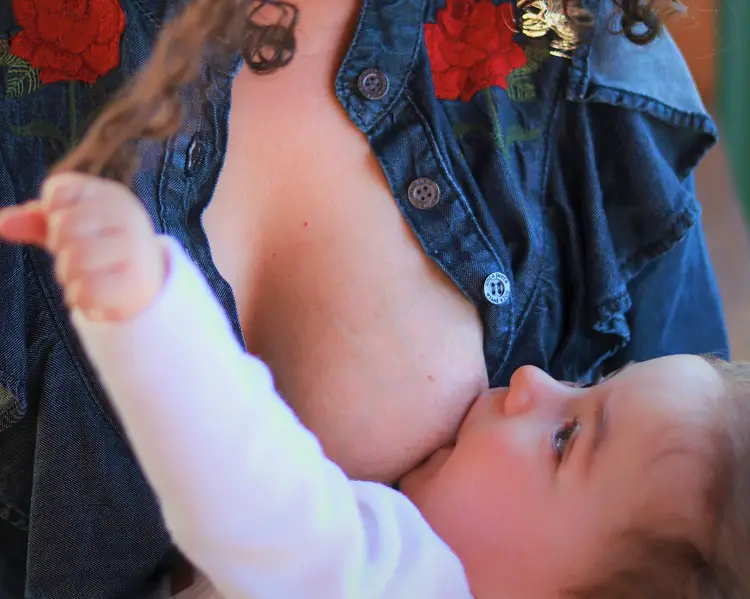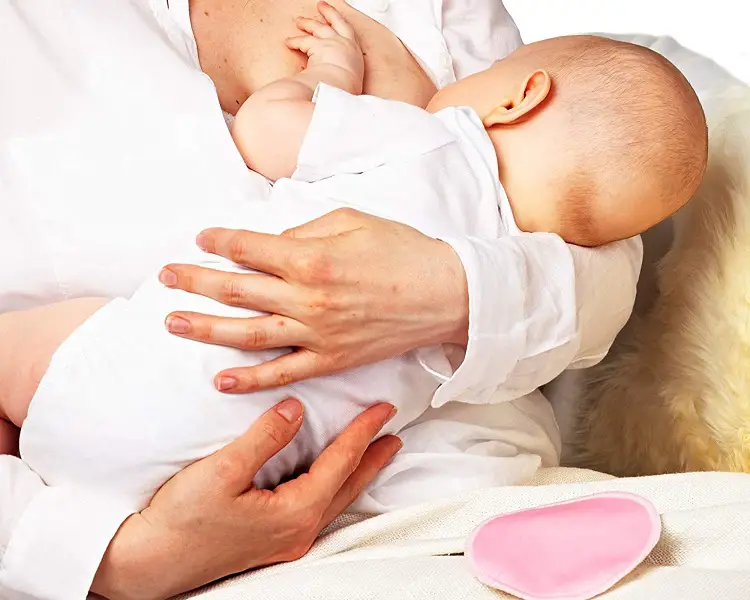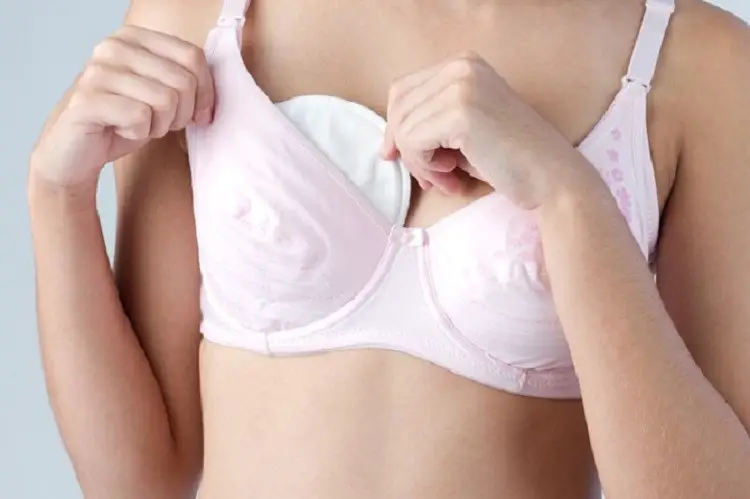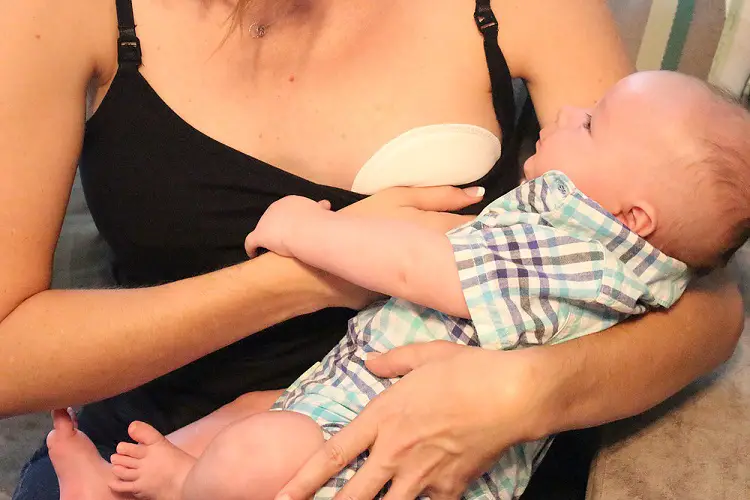As an expectant mother, there are so many decisions you have to make on how you want to raise your baby. One of those decisions is whether or not you need a nursing pad, how many nursing do I need? and when to stop breastfeeding.
Most women will need nursing pads in the early stage of breastfeeding. During this period, you will go through a period of leaking before your milk supply adjusts to the baby’s demands.
Since every woman breastfeeding journey is different, some women may not experience leaking like the rest. If you are a first-time mom, you probably are thinking how many nursing pads do I need? This article is for you. Read on…
What Are Nursing Pads?
Nursing pads absorb breast milk that may leak between feedings. You wear them inside your bra to keep your nipple dry and keep milk away from staining your clothing. They come in various patterns, shapes, and sizes and can either be disposed of or reused.
Regardless of which style you decide to use, make sure they are contoured to fit snugly against your body. Nursing pads can come in a flat circle shape, but they will bunch when placed in your bra.
Additionally, choose nursing pads that are soft and absorbent and that allow air to your breasts. It’s important, you avoid those with waterproof or plastic liners because they can trap moisture against your skin.
Why Do I Need Nursing Pads?

When you decide to breastfeed, you need to be ready for your breasts to leak milk in between feedings. It is also normal for your milk to leak when you hear your baby crying or it is close to the time your baby would normally feed.
Additionally, while your baby is nursing on one breast, the other breast will leak. This is because your let-down reflex occurs in both breasts at the same time. It will take some time for your milk to become regulated so expect to wear nursing pads for at least a few months.
As mentioned earlier, you don’t want to trap moisture against your skin. Hence, you must keep your nipples as dry as possible to prevent irritation or yeast infections. That implies that even when you are using breast pads, you need to change them frequently when they get wet.
Types Of Nursing Pads
When purchasing breast pads, you will need to decide between these two types:
- Disposable
- Washable/Reusable
The type of breast pad you choose all depends on you. There are arguments for both, and as much as the washable ones contribute less to waste heaps and are cheaper, they were not practical for me.
However, you may find a mix of the two nursing pads a great idea. When at home, use the reusable ones and save the disposable ones when you’re outside or at work.
The pads, either reusable or disposable ones, will stick to your nipples as you are about to take them off. This might be a bit painful especially when you leave them on for too long. It’s important to change your pads regularly to avoid such occurrences.
Disposable Or Reusable?
Nursing a baby is a beautiful experience. Those feelings when you cuddle your baby as you provide nourishment while breastfeeding is a wonderful and rewarding experience for every mom. Unfortunately, it does come with a few challenges like sore nipples and leaking breasts.
Nursing pads can play a huge role in keeping you comfortable and prevent embarrassing leaks from soaking through your outfit. They are available, similar to diapers, in disposable or reusable options. So which is the most ideal choice for you?
Disposable Nursing Pads
Disposable nursing pads are made of thin absorbent material and come in various degrees of absorbencies like sanitary napkins. You can buy a box of disposable pads that contain somewhere in the range from 50 to at least 200.
They usually have a sticky back to adhere them to your bra, which can obstruct the breathability. Once they get wet, just throw them in the trash and put in new ones.
Numerous disposable nursing pads, just like disposable diapers, contain absorbent chemicals that you will be putting directly against your skin.
They also lack proficient airflow, which can result in discomfort and trapped moisture and breast infections thrive so much in moist environments.
Therefore, if you are especially leaky, you will have to go through a lot of disposable pads, which are not only inconvenient but additionally costly.
Reusable Nursing Pads
These are cloth pads with some of them with a breathable leak-resistant layer that suits perfectly into your bra just like disposable pads. Since they are made of natural fibers, cloth nursing pads provide better air circulation, which is important to help in the sore nipple healing process.
Rather than discarding these pads after use, they are easy to wash and dry and most of them can be washed easily with your baby’s clothes, but you can decide to launder them in a laundry bag to keep pairs together.
Not only will you be saving the climate by reusing your pads instead of tossing them in the garbage, but you will save money as well. A box of 60 disposable nursing pads costs around $10. While the sum you will need can change enormously, you will have to keep purchasing pads, which will add up.
Reusable nursing pads are much more economical. You can expect to need around 6 to 9 pairs of nursing pads, which may cost about $7 a pair on Amazon. And in the future, if you have more children, you already have the nursing pads since they’re designed to last longer.
Read Also: How To Relieve Sore Nipple Breastfeeding?
What To Look For In Nursing Pads
When it comes to purchasing breastfeeding pads, there are various things to consider irrespective of whether you go for reusable or disposable pads. Here some vital things you must keep in mind.
Comfort
These tiny pads are going to be one of the essential parts of your life for a while now. Since you’ll have to wear them all day and night, make sure they are comfortable. It may be difficult to choose a pad that’s comfortable immediately, so I recommend buying 2-3 different brands and trying them.
Absorbency Level
A highly absorbent breast pad means you will go for a longer period between changes. This means you won’t have to spend always on breast pads.
Coverage
For mothers with large breasts, it is recommended you buy nursing pads that are large enough to cover the areola area. A well-fitting pad is additionally less noticeable beneath your dress. It also guarantees there are no leakages.
Material Used
If you decide to go for washable breast pads, choose those with a soft material to provide you with the needed comfort. Also, the pad should suit your exact cup size of the bra. It may take a couple of trials and errors before you settle on the perfect ones.
You should keep off from breast pads made entirely of plastic material because they prevent air from circulating in your breast. It is best advised to go for nursing pads made of cotton, bamboo, or performance fabrics such as mesh.
Read Also: 13 Best Ways To Burp A Baby
How Many Nursing Pads Do I Need?

You will need 6 nursing pads each day. It’s also a great idea to purchase a few brands with different shapes, sizes, and absorbencies when you are starting to identify the best brand that suits you. However, several other factors can impact the number of nursing pads you have to use, and this depends solely on every mother.
Read Also: How Many Newborn Clothes Diapers Do I Need?
Factors That Determine The Number Of Nursing Pads You Need
The Amount Of Leakage You Have
The number of nursing pads you need will depend on how much milk you are leaking. Just after birth, you may need a few pads since your body still hasn’t established a steady milk supply.
However, once you and your baby learn how to latch correctly, you will need more breast pads. In my case, I leaked A LOT with both of my babies and changed my pads 4-6 times per day at the start. Then gradually, it went to 4 times each day.
Absorbency
This generally depends on an individual. While I found disposable breast pads super absorbent, my friend swears reusable breast pads. A super absorbent nursing pad will help you go for longer periods between changes.
Read Also: Best Shopping List For First Time Moms
8 Best Nursing Pads 2021

- Best Overall: Rebabies, This product provide convenience, comfort, and maximum protection with organic bamboo material that is super absorbent.
- Best Disposable: Lansinoh Stay Dry Nursing Pads. Each of the pads is wrapped individually and has two adhesive strips on the back to keep them firm within your bra or nursing tank.
- The Best Ultra Thin: NUK Ultra Thin Nursing Pads. This pad is discreet with a no-show design, whereas the patented MilkLock technology is designed to absorb all leaks.
- Best Heavy Leaking: Medela Disposables. This pad is made with super absorbent materials designed to prevent leakage and maintain dryness while still staying discreet.
- Best For Large Breasts: Mother-ease Cloth Nursing Pads. Ultra-soft fabric signifies no dampness, itching, or sticking, and it means you don’t need to change often all through the day.
- Best Eco-Friendly: Bamboobies Disposable Nursing Pads. The bamboo viscose top layer of this product is soft on the skin along with its natural antibacterial and antimicrobial effects.
- Best Reusable: EcoNursing Reusable Bamboo Nursing Pads. These pads are comfortable and ultra-soft, there are also designed with leak-proof backings and are fully reusable and washable.
- Best For Sensitive Skin: Bamboobies Washable Nursing Pads. This ultra-soft and absorbent nursing pad have every attribute a sensitive-skinned mom will need.
Read Also: 7 Best Breastfeeding Positions For Large Breast
Other Frequently Asked Questions
How Often To Change Breast Pads?
It is recommended you change your breast pads every 3-4 hours. You will need about 6 pads daily with such a level of consumption. However, if you are a light leaker, this may not be the case, since you may not have to change as frequently. As mentioned above absorbency level is another vital factor that will determine how often to change pads.
Can I Get Yeast Infections From Using Nursing Pads?
Unfortunately, nursing pads can be a cause of yeast infections. It is important to change your pads immediately they become wet. Yeast thrives in a warm and humid environment, and by putting on a damp nursing pad for too long, you’ll be providing a favorable breeding environment. To prevent any risks of infections, always keep the breasts dry and clean.
Do I Always Need To Wear Breast Pads?
A lot of nursing mothers only have to wear nursing pads in the early stages of breastfeeding. While some mothers will leak lightly others will leak heavily. Over time, you will be able to understand your body properly and what triggers the leaks. This will help you in deciding when to put on breast pads and when not to.
Can I Reuse Disposable Nursing Pads?
No. Wearing a reused pads increases your chance of getting infections, which you will likely end up smelling sour. No one wants to be around a person that smells horrible!
Are Nursing Pads Safe?
It’s ok for any mother to ask this question. Breast pads will come into direct contact with the mother’s skin, and one needs to know if what they are using is safe for them and their baby. Fortunately, when used appropriately, nursing pads are safe to use.
Always change them when they get wet to prevent moisture around your nipple, which can cause thrush. If you are making use of reusable breastfeeding pads, wash them properly with vinegar, and sundry them were possible to eliminate any bacteria. If you observe you are getting recurrences of thrush infections, then your reusable breast pads may be the cause.
Yeast can live in clothing for a long period, and you may have to toss those to get new ones. Some mothers may get irritation on the nipples when they use nursing pads. This is usually a minor issue. As a nursing mother, if you are experiencing nipple irritation, a good nipple cream can help ease the discomfort.
Read Also: How Many Burp Cloths Do I Need?
How Many Breast Pads Should I Pack For The Hospital Bag?
During the first few days after giving birth, you probably won’t leak. However, since every mother’s pregnancy journey is different, pack about 20 pieces of disposable nursing pads in your bag just in case the need arises. It is recommended to go with disposable ones since they’re convenient to use while in the hospital as you toss them out easily when you are done.
Can I Put On A Nursing Pad Without A Bra?
You can wear silicone breast pads. These pads are not absorbent; rather, they prevent the breast from leaking by applying pressure on it. If you need to dress up in a fancy dinner gown, silicone pads will come in handy.
However, if you usually go without a bra, you can also go without one while breastfeeding. You can wear maternity tank tops with a built-in shelf bra to keep your nursing pad firm.
Read Also: How Many Cloth Wipes Do I Need?
Conclusion
I hope this article answers your question “How many nursing pads do I need?” Whether you prefer going for disposable or reusable pads, the most important thing you should always keep in mind is to change breast pads regularly to prevent irritation and any infections.
For the mothers who swear by disposable nursing pads, the Lansinoh Stay Dry Disposable Nursing Pads and the Medela Nursing Pads are the best. While for moms who prefer reusable breast pads, the Bamboobies Nursing Pads are affordable and convenient.
